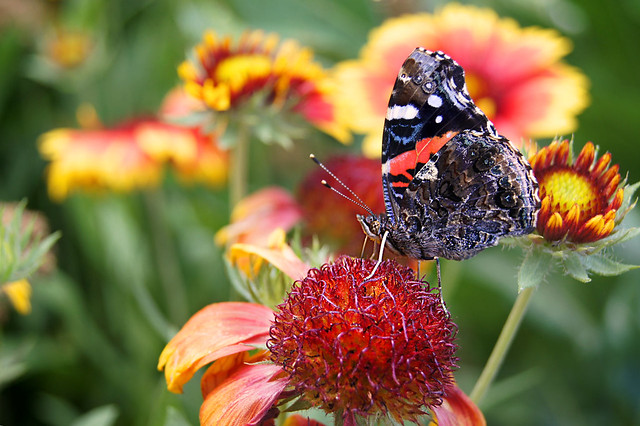Flower
Queen’s Morning

Yesterday morning started with a light blanket of fog. As the sun pushed it’s way up through the foggy horizon, it created a nice silhouette of some Queen Anne’s Lace that grows at the edge of the field of oats that is next to lawn of our country home.
To see a larger version of this image, simply click on it.
All of the photos I post are available for purchase. If you’d like to buy one, click on the blue “Buy this Online” bar below for a variety of print and frame options or contact me for digital purchase and licensing options.
Morning Dangler
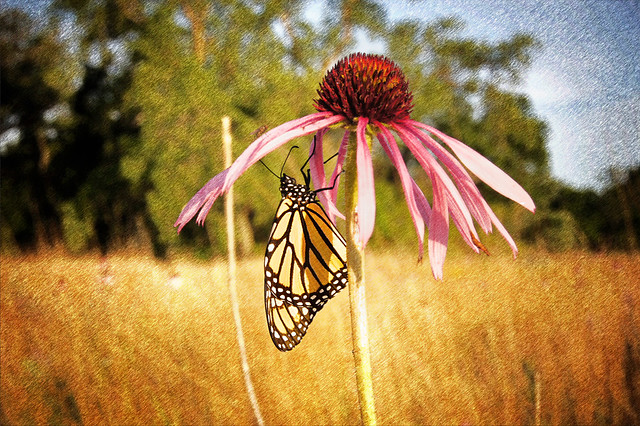
I found this monarch butterfly clinging to the underside of a purple coneflower in a meadow very early morning. It was obvious, this is where it spent the night. It was still in sleep-mode when I photographed it. I was able to nudge it without it flying off. I eventually coaxed it to the top of the flower and posted a photo of that earlier ( see it here: Monarch of the Meadow)
For a little different feel, I added a bit of texture to this one.
You can see a larger version of this image by clicking on it.
Center of the Cosmos
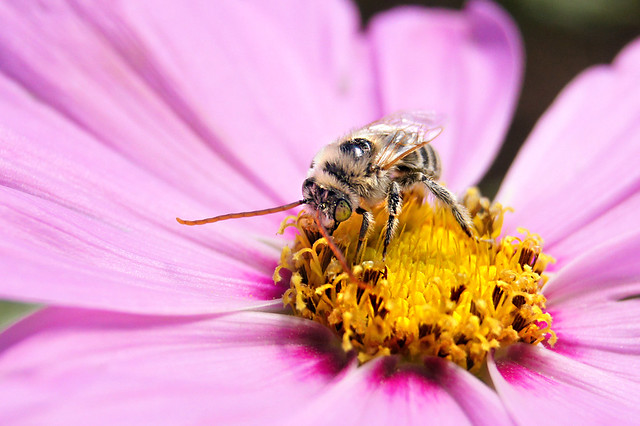
This bee was about some serious bee work on the center of a purple cosmos flower. I don’t recall seeing this particular type of bee before – with white hair, orange antennae and a yellowish-green eye. However, this year I’ve photographed several.
To get a better view of this bee and the flower, click on it and a larger version will open in a new tab.
Three’s a Crowd
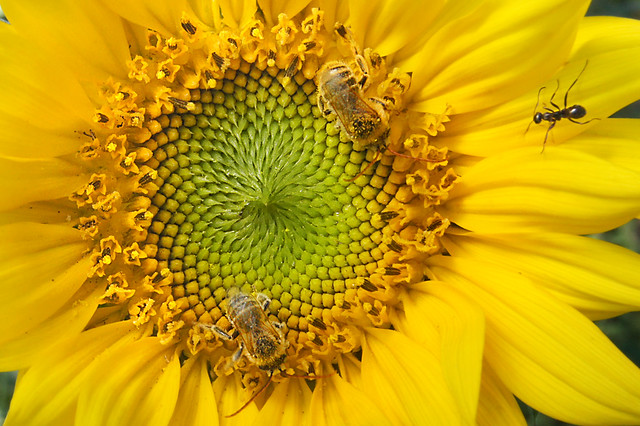
A couple of bees were working on this Sunflower when an ant decided to enter the picture. This is a flower in my wife’s flower bed. Not a flower she planted. One that was added by the birds dropping seeds from the feeders.
To see it larger, click on the image and it will open up in a new browser tab.
Bird’s Foot Trefoil
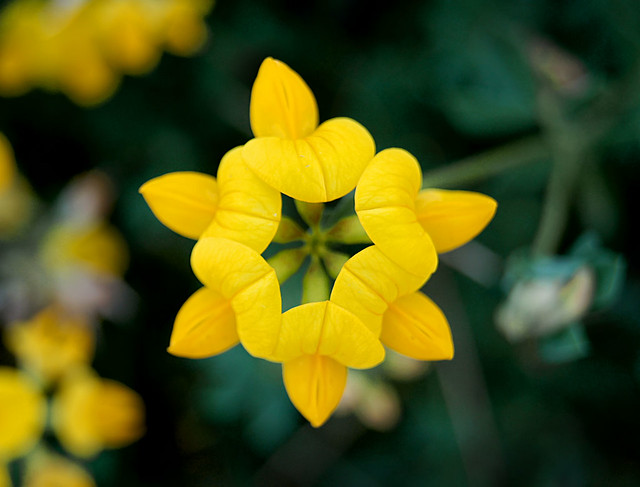
This is a flower known as Bird’s Foot Trefoil. This is a close-up, top-view of one of tiny flower clusters – about the size of a quarter. It has been growing extremely well in our area this year during our very dry summer we are having. It’s a plant that grows in bright yellow clumps, low to ground. I’ve always considered a pretty wildflower, but most consider it a weed in these parts.
According to Wikipedia…
It is a perennial herbaceous plant, similar in appearance to some clovers. The flowers develop into small pea-like pods or legumes. The name ‘bird’s foot’ refers to the appearance of the seed pods on their stalk. There are five leaflets, but with the central three held conspicuously above the others, hence the use of the name trefoil.
It is used in agriculture as a forage plant, grown for pasture, hay, and silage. It may be used as an alternative to alfalfa in poor soils. It has become an invasive species in some regions of North America and Australia.
The plant has had many common names, which are now mostly out of use. These names were often connected with the yellow and orange colour of the flowers, e.g. Butter and Eggs. One name that is still used is Eggs and Bacon.
To see a larger version of this image, click on it.
Fixin’ to Bloom

In photography, sometimes lighting is everything.
This is simple Queen Anne’s Lace. It is just beginning to open up to that flat base of tiny white flowers.
The lighting and color of the background are what make this a worthwhile post. The light was provided by a rising sun. The background is a simple concrete wall – the foundation of our home.
This kind of lighting is why the times around sunrise and sunset are called the “Golden Hour” in photography.
To see a larger version and more detail, simply click on the image.
Garden Svengali
Hands Lifted High

This is an example of unusual light creating an unusually lovely image. This sparse bunch of Phlox were being illuminated by the muted light of very low sun in the early morning.
There were Phlox bunches filled with many more blooms, but the cool color of these few caught my eye.
Get a better look at a larger version by clicking on the photo.
Bold and Beautiful (monochrome)
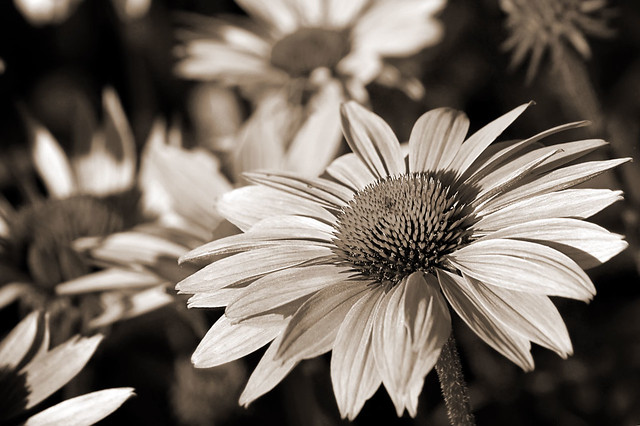
Sometimes I like taking a favorite color photo and removing the color – making it monochrome – to see how the change affects the image. There are times when the B&W version is better…and times when it is not. This is a monochrome version of Bold and Beautiful. You can look and both and decide which you like better – color or B&W. I like aspects of both and would call this one a toss up.
Click on the image to see a larger version.
Bold and Beautiful
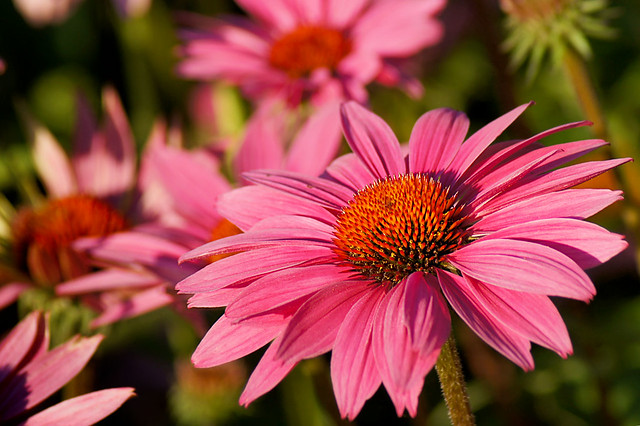
These bold, big-as-all-outdoors flowers remind me of purple cone flowers. I’m not sure they are cone flowers because the petals don’t slope downward. I’m not an expert, I just appreciate the beauty.
These beauties were photographed in the center of the circular entrance to the Kraft Building at the Green Lake Conference Center, Green Lake, Wisconsin.
To see a larger version, click on the photo.



















































